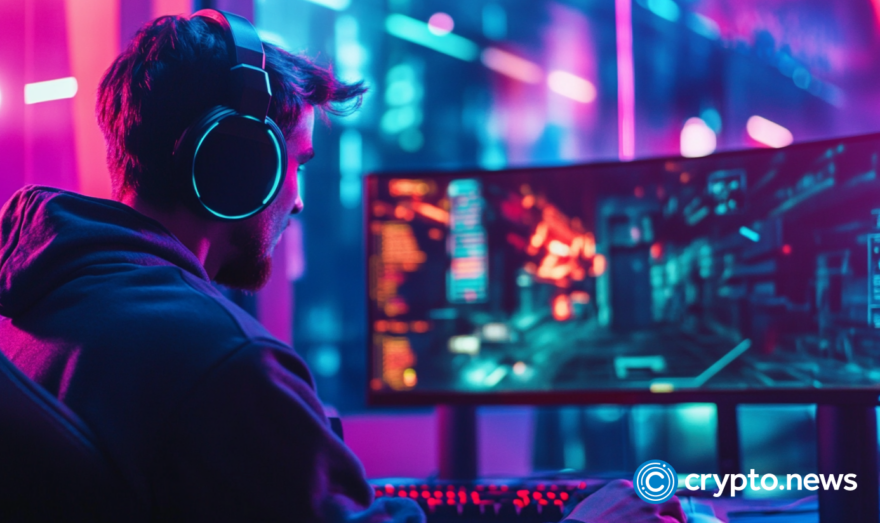AI is the best thing to ever happen to content creators in the web3 era | Opinion

Disclosure: The views and opinions expressed here belong solely to the author and do not represent the views and opinions of crypto.news’ editorial.
Artificial intelligence’s momentum seems unstoppable, and countless researches have been devoted to its potential impact on jobs. There have been doomsday scenarios of AI leaving millions of white-collar workers unemployed and decimating entire industries. But as Charles Darwin once said, it isn’t intelligence that dictates survival; it’s being able to adapt and adjust to change.
In the creative economy, which has an estimated value of $985 billion, this technology’s impact is often framed negatively. Actors can be made redundant, writing rooms can be replaced by large language models, and green screens can be swapped for generative AI tools.
Yet there’s another side to this story. AI is also empowering artists, pushing the boundaries of what they can make, and demolishing barriers to entry for gifted creators who lack the deep pockets of Hollywood studios and TV giants. With blockchain technology, vibrant economies are emerging that allow creatives to build direct relationships with new audiences.
Last September, the AI-powered graphic design platform Canva released an in-depth survey examining how these tools affect the creative sector. Over 4,000 professionals across nine major economies were involved—and the results were eye-opening. Why? Because a whopping 75% of those polled described generative AI as an essential tool in their arsenal. Moreover, 97% of executives are relaxed at the idea of this technology becoming a more significant force in the workplace. Forward-thinking leaders can see the seismic opportunity on offer.
AI as a force for good
If a typical creative kept a record of their day’s work and painstakingly itemized all of the tasks completed, most would realize that hours and hours of their precious time are stolen through mundane, repetitive jobs. Such assignments are necessary, but they couldn’t be automated before artificial intelligence came along. Building schedules, sending emails, summarizing reports, and researching storylines are all good examples of the monotonous tasks that AI can handle on their behalf.
The benefits can be nothing short of transformative. Now, creators can focus on what they do best: storytelling, innovating, inspiring, and exploring. AI tools serve as their assistant, handling day-to-day responsibilities with minimal input. Instead of this technology depriving hard-working professionals of income, it has the potential to boost their earnings by enabling them to devote their energy and efforts to creating products that consumers can buy and enjoy.
Blockchain further supercharges this new way of working. Blockchains have already been used to tokenize everything from music royalties to expensive art pieces. Even more exciting is that AI companies can further reduce the cost of providing these services through blockchain and decentralized computing power. Additionally, decentralized computing power, rewarded through blockchain, could be the only solution to meet the massive demand that tech manufacturing companies are facing. As Jensen Huang, the founder and CEO of Nvidia, said:
“Accelerated computing and generative AI have hit the tipping point. Demand is surging worldwide across companies, industries, and nations.”
Leveling the playing field
Before AI, acquiring the tools and resources required to produce quality content ran into many thousands of dollars. But now, cutting-edge tools can be accessible to anyone—not just those with substantial wealth.
The rise of text-to-video generators like Sora means anyone with a bright idea can bring their vision to life. According to a recent survey, American consumers could not even tell the difference between real-life videos and AI-produced clips.
While the cost of these new AI technologies is yet to be confirmed, this has the potential to be transformative for budding directors attempting to create films on shoestring budgets. For the first time ever, their production values can match those of Hollywood studios. Stunning visual effects—as well as seamless editing and rendering—can be applied in a couple of clicks. It also reduces the financial risk associated with pursuing a project.
Over time, we’re going to see a substantial increase in the amount of quality content entering the marketplace. In a way, you could argue history is repeating itself. The arrival of streaming giants like Netflix didn’t cause major movie studios and broadcasters to run out of business. Instead, it gave consumers greater choice in the TV shows and films they can watch on demand. Similarly, the advent of online digital editing didn’t decimate the job prospects of film editors; it just supplanted the laborious task of manual splicing and opened up their creative options.
Empowering content creators is years overdue, and the proliferation of AI tools will allow the sector to reflect better the society we live in. Right now, just 23% of European filmmakers are women—with recent research suggesting the content won’t achieve gender parity until 2080. Unconscious bias exists in how works are commissioned, meaning consequential ideas for albums, dramas, comedies, and documentaries are never given the green light. Artificial intelligence means artists no longer need to wait for permission—and can finally enjoy the creative freedom they’ve long craved.
It’s telling that the likes of OpenAI are beginning to seek partnerships with Hollywood giants—with the industry already using this technology in the post-production process.
What does the future hold?
The fast-moving nature of AI makes the future difficult to predict. New startups that embrace this technology emerge every week, and AI’s capabilities are improving by leaps and bounds with every passing month.
Challenges do lie ahead, especially regarding protecting copyright and ensuring creators have the skills to make the most of AI tools. But resistance is futile, and dwelling on the negatives of artificial intelligence will change little. Instead, our attention must turn to how AI can lead to a renaissance in the creative sector, benefit artists, and entertain consumers.
We’re only scratching the surface of what AI, web3, and blockchain can achieve. Hollywood and Silicon Valley are already beginning to sit up and take notice. Independent content creators have a first-mover advantage here. This technological revolution won’t just transform how they work but positively impact the economics of this challenging industry.











